Visiting Wilhelm
We spent the night in Cana. Therefore, we arrived in the capital of Lower Normandy in the evening. It was another point of the route where I wanted to get. Because this city is closely connected with William the Conqueror. I have already visited some places associated with William, who was first called the Bastard (Fé camp, Rouen, and much earlier - the Tower of London, Westminster, Winsor and York). It was Sunday. We lived in the center, so we went for an evening walk not far from the hotel. We met local residents only at the fortress. And only on its territory they were able to get (although there are museums there, but they, of course, were closed).
The city is located on the banks of the river Orne. Once upon a time in Roman times, limestone was mined here (it is called Kan). In those days, houses were made of it (the remains of an ancient settlement from this material can be found near the former male abbey), roads.
After the Battle of Hastings, limestone was taken to England (later even to America). There are streets in the city bearing names associated with quarries. Then the careers were exhausted, they were closed. Concrete has replaced stone. During the bombing of World War II, civilians hid in abandoned quarries. Now limestone is mined in small quantities, mainly for restoration purposes, although the Peace Memorial is also built from Kan limestone.
The word "Caen" is short, but formerly consisted of two parts. The origin of one is associated with the Celtic word meaning "field, plain", the second, also Celtic - with the word "battle". So we met with the Celts. . .
In ancient times, a settlement appeared on the Roman road from Bayeux to Lisieux. But it had practically no significance, because there was a more significant place a little to the south. Mostly artisans lived here. Then the invaders destroyed it.
The place became purely agricultural. Frequent floods (the place is rather low) in the III century. forced residents to move north.
In the 7th century, monks from Bayeux appeared and founded several churches along the old Roman road, soon destroyed by the Vikings.
It was only in the 10th century, already under the Norman dukes, that parish churches appeared. At first, the dukes strengthened the borders of the newly acquired territories. Then William, who became a duke, drew attention to the desolateness of Lower Normandy and the lack of castles inland, and began building in previously empty places.
Caen as a settlement was first mentioned at the beginning of the 11th century in the documents of the abbey in Fé camp.
Caen is the favorite city of William the Bastard the Conqueror. It was here that he built a large fortress. Here was his residence (he, however, did not live here permanently, since his whole life was spent in battles and campaigns).
But it was here that he wanted to be buried in the abbey he had built. Why did he choose Caen for his main residence?
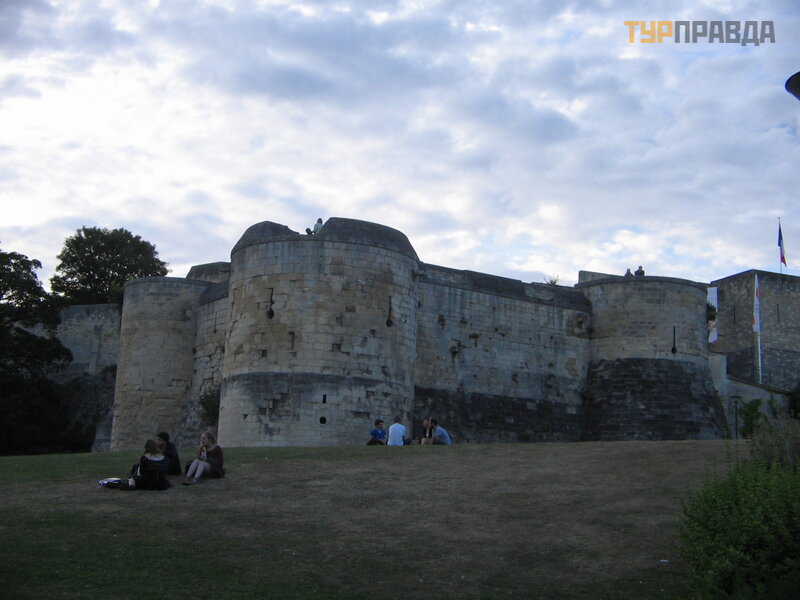
He was born not far away - in Falaise (it is located to the south, his mother lived there, there is a fortress). Not far from Caen in Val-et-Dunes, his first successful battle took place (then he was 20 years old). He married, however, in O, on the eastern border of the duchy. By the way, preparing an operation to "return his English inheritance", Wilhelm also planned to sail from these places. Then, without waiting for favorable winds, the place was replaced.
The official capital and burial place of the Norman dukes was Rouen. Since the early Middle Ages, it has been the seat of a bishop. Previously, secular and spiritual authorities were closely intertwined, since people from the ducal family were also bishops. One of them was hostile to Wilhelm.
Maybe, having become an independent force, the duke wanted to move away from episcopal power?
As a child, he lived in fear of a clan of relatives who tried to take power from the illegitimate duke. In his youth, he secretly had to flee from the rebellious viscounts of Cotentin, crossing the desert territories of this area. A fortified castle (one of many he built) could give him the protection he needed. Perhaps it was easier for him to build from scratch: here everything could be organized without looking back at his predecessors. Lower Normandy, and in general all the interior territories of the duchy, were deserted and unprotected. The whole life of the duke was spent in campaigns, and he understood the importance of fortified castles for power. Moreover, in this low, flooded valley of the Orne, there was a rocky hill on which the duke built his castle.
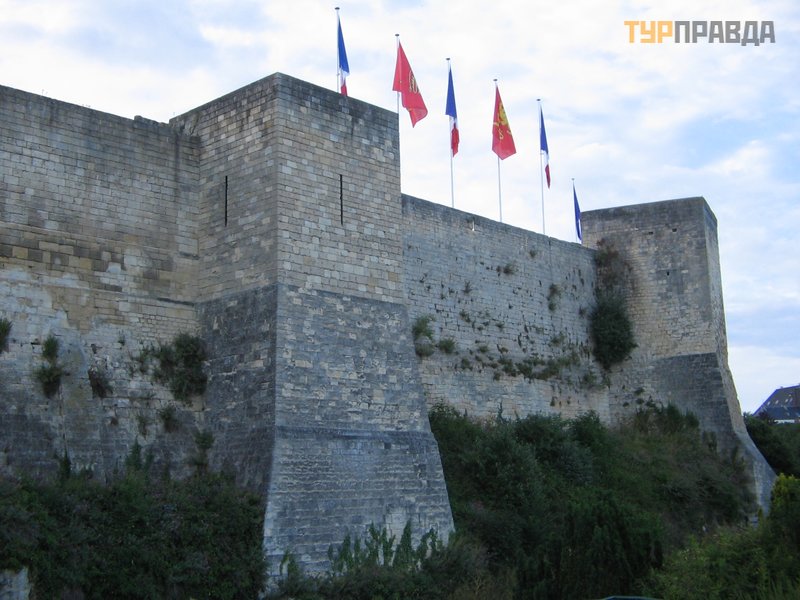
Wilhelm's heirs signed an agreement on the division of the inheritance here. One of them (Kurtö z) ordered a canal (called Robert's canal) to be dug to drain the swampy area. Another (Beauclerc) significantly rebuilt the fortress, building a donjon to strengthen it and a new hall for receptions.
The Plantagenets also considered the city their capital. Caen shared the fate of the duchy when it was given by John the Landless to the French crown in the 12th century. Philip Augustus fortified the city while retaining its privileges. During the Hundred Years War, the city served as the seat of the British, they also founded here in the 15th century. university. Then the royal administrators lived in the fortress, there was a prison, there was a garrison. And, finally, not far from these places, the allies landed, liberating France in the Second World War.
There is a lot to see in the capital of Lower Normandy.
The oldest part of the city is located, as it were, on an axis from west to east: a male abbey (abbaye aux hommes) - a castle - a female abbey (abbaye aux dames), to the north - a university, to the south - St. Peter's Church.
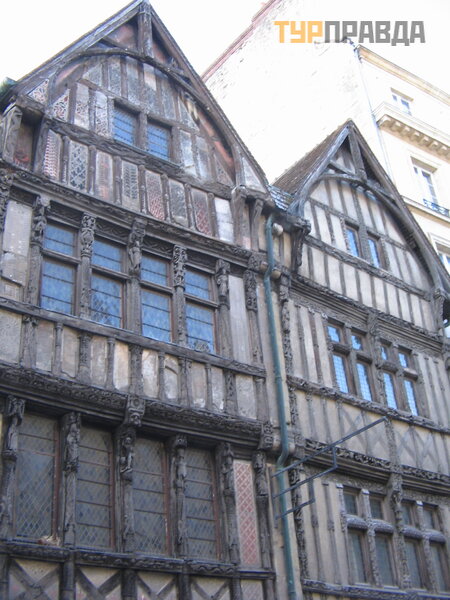
The castle of the XI-XII centuries is one of the largest fortresses in the country. Entrance to the territory is open until late and is free. Now the castle has been restored, there are various museums on the territory. If you enter the territory through the gates of St. Peter (south), then on the right in the modern building there will be a Museum of Fine Arts (European paintings from the 14th century to the present day, engravings and a sculpture park). The medieval Church of St. George is located a little to the left (XII-XVI centuries, there is a ticket office, a model of the fortress, information about museums). On the left opposite the church is a restored medieval garden of medicinal plants.
In this part of the fortress, in several buildings, there is the Museum of Normandy - ethnographic, archaeological collections and tools of the 20th century. Rulers' Hall further left (XIV-XVII centuries, belongs to the Normandy Museum). You can walk along the medieval walls (inside them are the exhibition halls of the Normandy Museum). Even further, there will be the Chessboard Room (12th century, formerly the feudal court of Normandy, now the Museum of Normandy). To the right of it was the ducal castle (XI century), even more to the right - a donjon (XII-XIII centuries) 30 meters high - was destroyed during the revolution, now you can see thick walls. To the north of it you can go to the university. Museums are open from 9.30 to 18; free of charge: for visitors under 26, for everyone - on the first Sunday of the month; day off - Tuesday and public holidays.
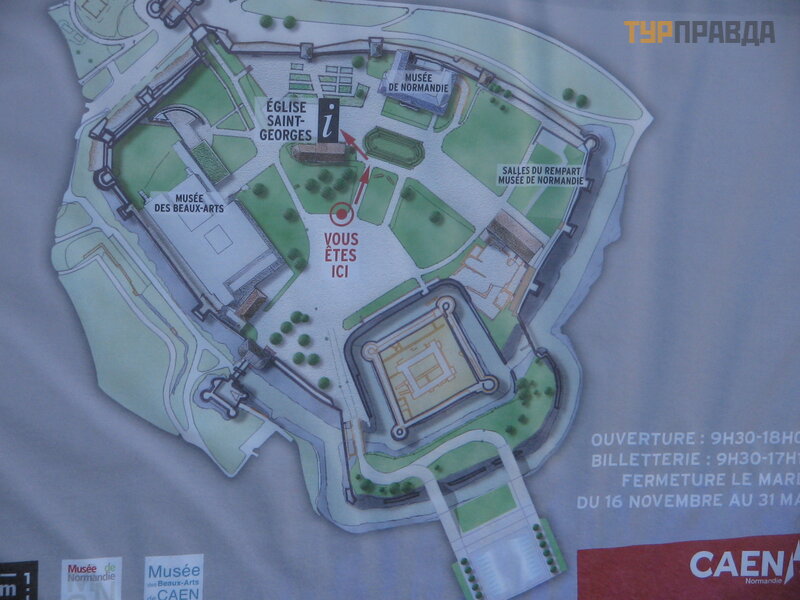
There are a lot of churches in Cana (and before the war and the revolution there were even more, I counted about 50, and about 30 were founded before the 14th century).
Some are destroyed, now in ruins. Some today are used for different purposes. The names of the destroyed and closed ones were transferred to the current ones, their names changed. Therefore, I will only mention a few.
Old Church of St. Etienne. Located opposite the town hall. Supposedly founded in the 10th century. First mentioned in documents from the time of Wilhelm. Already there it is called "Old". The church first suffered during the Hundred Years War. Has been restored. After the revolution, the church was not returned again. Plans to transfer it to the Society of Antiquarians did not come to fruition. At the end of World War II, she was hit by a random shell. Then they recognized the impossibility of its restoration. It still stands in ruins.
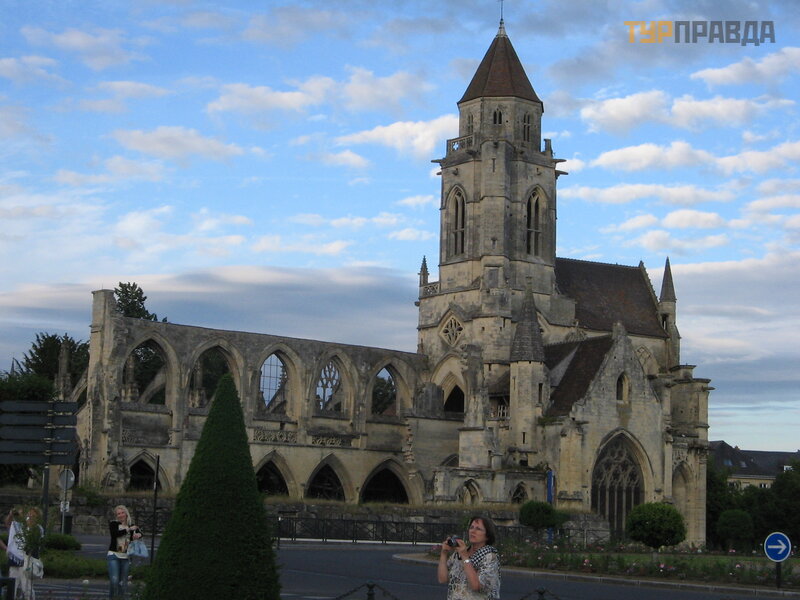
St. Etienne's Church, where William the Conqueror was buried, belonged to the monastery he founded. The monastery was located to the west of the duke's fortress.
Now here is the town hall, so you can get into the territory only on a weekday at certain hours. Wilhelm's grave was in the church of the former monastery. The church was the first building of the abbey. Built in Romanesque style. In the XIV century. the ducal palace, the Guards Hall and the monastery fortifications appeared. Religious wars and revolution devastated the tomb of the duke. They say that only one bone has survived to this day. How did you determine that it was his bone? Don't know.
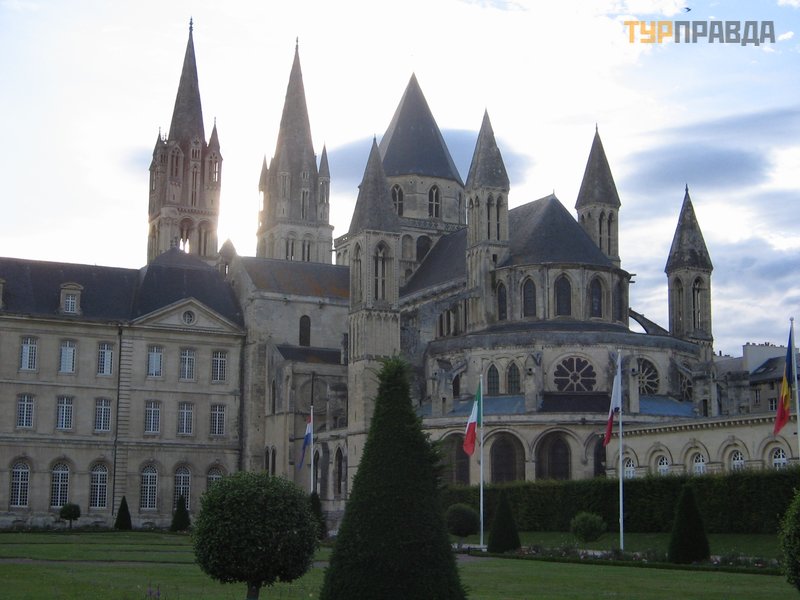
The Church of the Holy Trinity(now the parish of St. Giles) is located in a convent (east of the fortress), founded by the Duchess of Flanders Matilda - Wilhelm's wife. She died a little before William and is buried in the abbey she founded. Her grave is under a black marble slab. The women's Benedictine monastery was located here before the revolution. Under him, girls from noble families studied.
The most famous is Charlotte Corday, who killed Marat. On the territory of the abbey now there are local governments, so you can get here for a limited period of time with a guided tour at a fixed time.
The history of the founding of these abbeys needs to be explained. Wilhelm and Matilda were considered relatives (at least three accounts of the degree of relationship between them are known). The church forbade marriages between relatives. The ban is difficult to implement, given that the choice of non-relatives among the European aristocracy is always difficult: after all, the circle of "equals" is quite narrow. Religious prohibitions will be added later. But the Pope was a Lorraine, did not like Wilhelm. Apparently, that's why he opposed this marriage. On the other hand, Normandy is a wealthy, influential duchy; people from these lands then already lived in Sicily and southern Italy, and formally protected the Pope.
Therefore, he limited himself to the requirement for spouses-relatives to establish abbeys: male and female from each side.
I'll tell you about one of the accounts of the "kinship of cousins". William was the nephew of Richard III, who married the daughter of the French king, Adele, but died soon after. According to some sources, she was a child at that time, according to others, she was 18 years old. One way or another, Adele of France was widowed, allegedly only formally becoming the wife of the Duke of Normandy. Then she married the Count of Flanders, and her daughter was Matilda, Wilhelm's wife. It turned out that Adele was both aunt and mother-in-law of Duke Wilhelm. Such is the relationship. By the way, this same Adele was also a relative of Anna, the daughter of Yaroslav the Wise, because her brother Heinrich married Anna (even before the split of the church into Orthodox and Catholic).
Church of St. Peter (XII-XVI centuries). It is located south of the fortress, not far from the tourist office on Sq. St. Peter.
The most important ceremonies were held in the church. For example, Henry of Navarre here renounced the Protestant faith, thereby initiating religious wars. During the revolution it was closed, the revolutionaries turned it into another Temple of Reason. But it was returned to the church rather quickly. The Gothic tower of this church was called the Queen of the Norman towers, and was inspired by the subsequent construction. During World War II, it was destroyed by a shell and collapsed, the fire destroyed the roof. Restored.
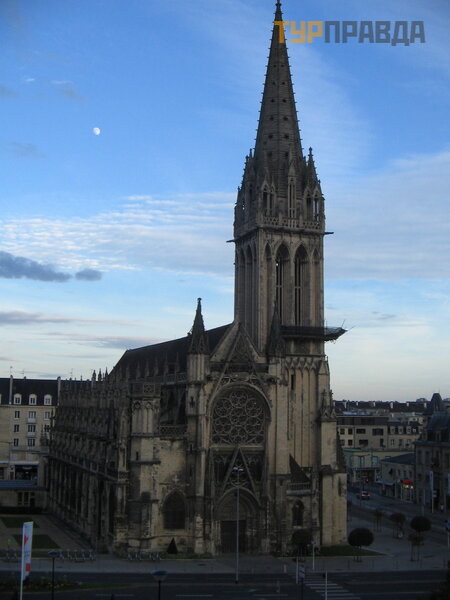
St. John's Church. The first church dedicated to the Apostle John was built in the 7th century. It was located on the site of an ancient Roman road, where before that there was also a cult place with a necropolis. First mentioned in the 11th century. in the founding document of St. Martin's Abbey. The tower of the church is called the Canian Leaning Tower (in the 17th century it deviated by more than 2 meters).
It leaned over like many buildings built on unstable swampy ground. Restoration work to strengthen the base was carried out recently. At the same time, tombstones of the 13th-14th centuries were studied.
Cold Street (Froide) and the Church Our Lady (now the Savior) on it. From the church of the 7th century, as well as from the Romanesque of the 12th century, nothing remains. The parts that now exist date back to the 14th-16th centuries. This church has a puzzle: a staircase leading to nowhere on the facade. The houses of the XV-XVI centuries are also interesting. on her.
The Old Church of the Savior (now called the Oil Market) on the square of the same name. Received the name "Old", because the Church of Our Lady on Kholodnaya Street in the 19th century. renamed the Church of the Savior. Founded at the end of the Carolingian era. The oldest parts of it date back to the 11th century. The current square was once a market place, university students lived around, it served as a place of execution for the prisoners of the fortress.
During the revolution, the church was closed (so its name was "transferred" to another church). During the war it was badly damaged. After restorations on the vault, you can see frescoes from the second half of the 16th century.
Mansion Escoville is located at the church of St. Peter. Built in the Renaissance style in the 16th century. Destroyed during the battles for Caen, then restored. Now there is a tourist office.
House Quatrans on Prison Street (Geole), which runs along the western part of the fortress, is located near the church of St. Peter. Built in the 15th century. The house was built by the leather merchant Jean Catran. Later, architectural elements of the Renaissance (turret) and painting were added to it. Some elements are similar to the Escoville mansion built at this time. The house is a rare example of medieval civil architecture. The tower was destroyed during the war.
A few more interesting places. Peace Memorial commemorating the liberation of Normandy in 1944
(in the northwest), because a few tens of kilometers from it was the landing site of the allied troops. Museum of Antiquities - for those interested in this period (in the south). Botanical Garden (in the northwest), the first trees of which were planted in the 17th century. Hill of Birds Park - built on the site of a former landfill. It is an example of land reclamation.







